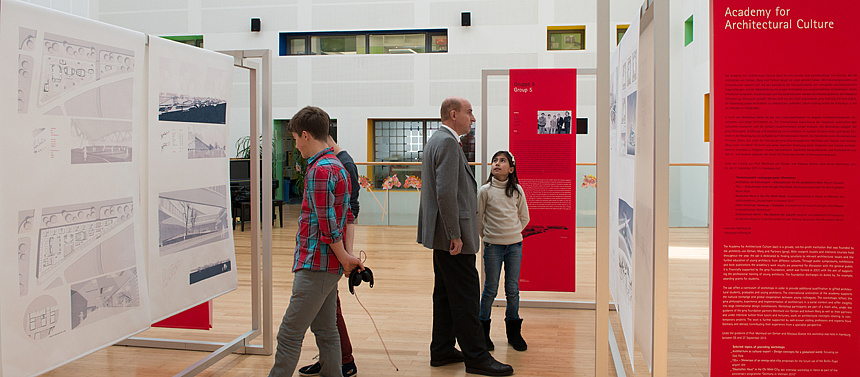
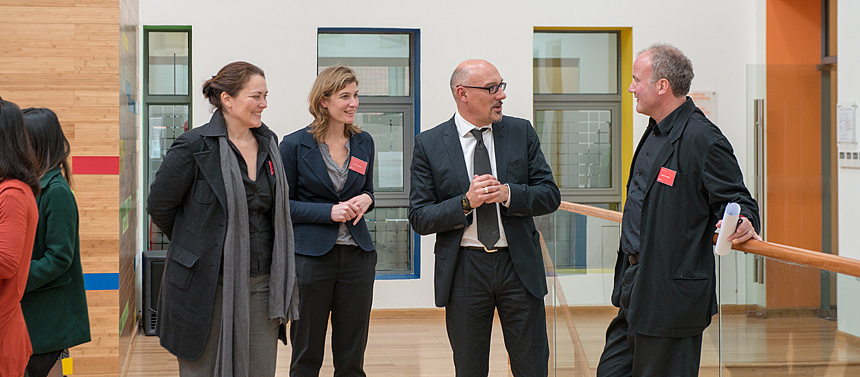
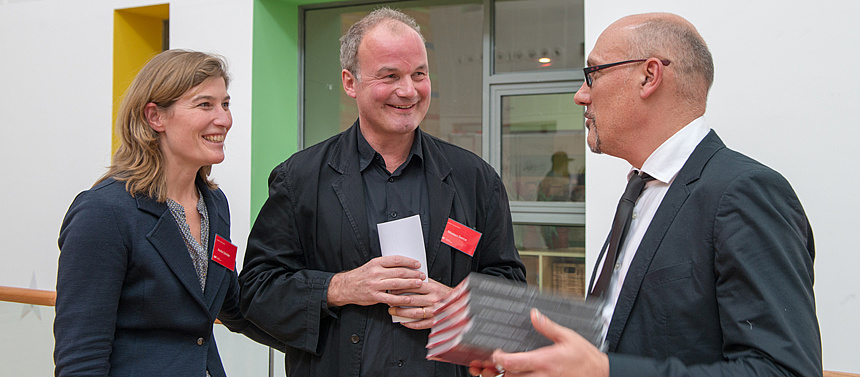
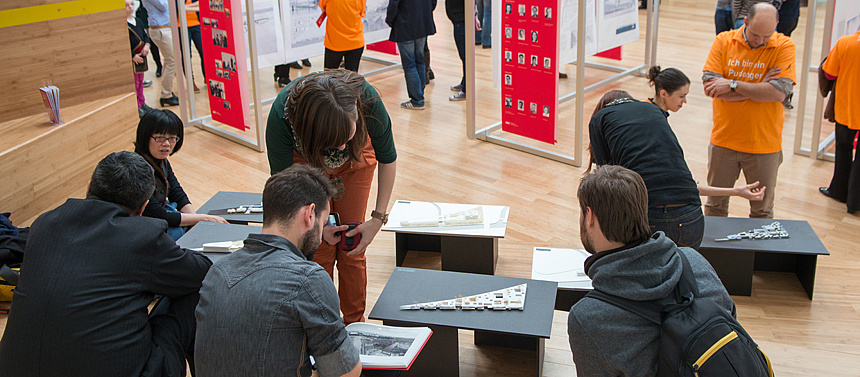
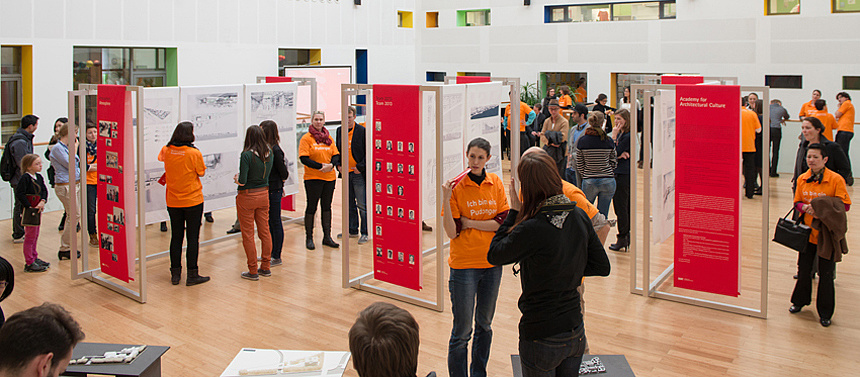
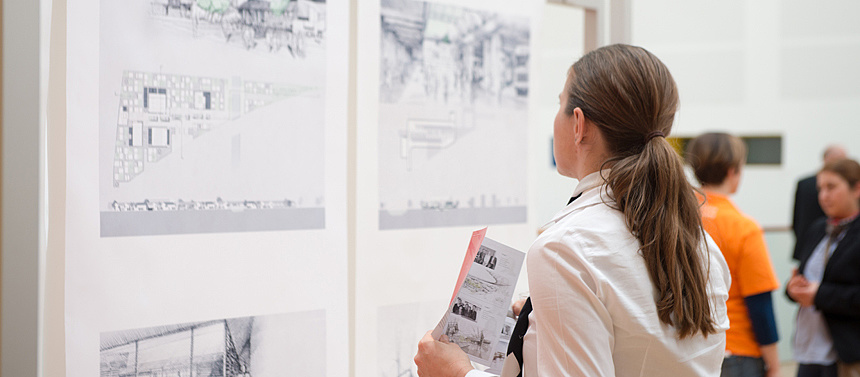
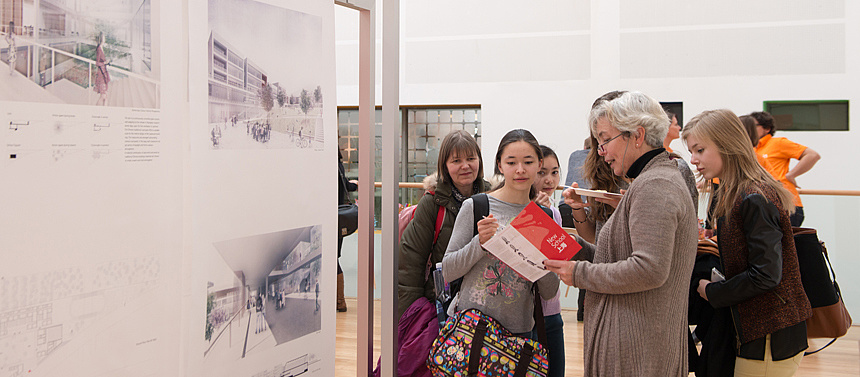
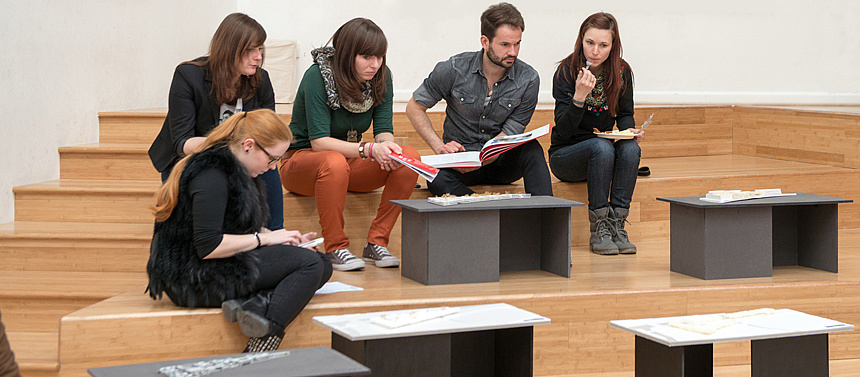
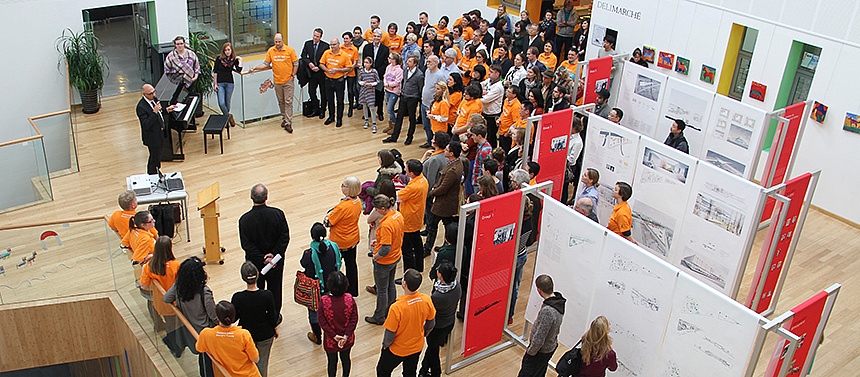
Urban Exchange: New School. Designs for the German School, Shanghai
Exhibition in Shanghai, China
An exhibition of the results of work carried out in the Academy for Architectural Culture (acc), Hamburg, at the German School, Shanghai Pudong, from 7 to 21 March 2014
Address: 1100 Jufeng Lu, 201206 Shanghai / Opening hours: Monday to Friday, 14:00 to 17:00 hours
With the aac workshop “Urban Exchange: New School – designs for the German School, Shanghai”, the Academy again chose a subject which is based on an actual situation and which is considered to be relevant to the current social discussion.
For its continually growing need for high-quality teaching and common rooms, the German School in Shanghai Pudong requires a new building. The workshop briefing was to design this space taking into account the educational orientation and the leitbild of the school, as well as the requirements of the current schedule of accommodation – which includes a supplementary international branch of the school – and the special conditions of the place.
Six mixed international groups of young architects and architectural students dedicated themselves to the task and researched new typologies of urban school buildings of tomorrow.
This workshop took place in Hamburg under the direction of Professor Meinhard von Gerkan and Nikolaus Goetze from 5 to 27 September 2013.
We cordially invite you to the opening of the exhibition at the German School, Shanghai, with a presentation of the design results on Friday 7 March 2014 at 14:30 hours.
aac – Academy for Architectural Culture
The Academy for Architectural Culture (aac) is a private not-for-profit institution with seat at Rain-villeterrasse in Hamburg, which was founded by the architects von Gerkan, Marg and Partners (gmp). With research studies and intensive courses throughout the year, the aac focuses on search for solutions to relevant architectural issues and on the continuing education of young architects from a range of different cultural backgrounds. Via public symposia, exhibitions and the publication of books, the results of work at the Academy are presented to the public and decision-makers for further discussion. The aac receives grants from the gmp Foundation, which was set up in 2007 with the purpose of supporting the training of young architects. The Foundation achieves this aim by providing study grants, and other funding, for the aac. The aac offers an additional qualification for gifted architectural students, graduates and young architects in the form of workshops. The international orientation of the Academy supports cultural exchange and global cooperation between young colleagues.
The brief
For its continually growing need for high-quality teaching and common rooms, the German School in Shanghai Pudong requires new accommodation. The workshop briefing was to design this space taking into account the educational orientation and the leitbild of the school, as well as the requirements of the current schedule of accommodation – which includes a supplementary international branch of the school – and the special conditions of the place.
In future, the school campus is to include the German School, Shanghai, the International German School, Shanghai, as well as a day nursery, sports and swimming facilities, facilities for an afternoon crèche and the administration. It is possible that both branches of the school may be able to jointly use the facilities (requires identical timing of teaching units and breaks). Workshop participants were deliberately given the option to consider the branches as a combined whole or individually in their architectural concepts.
In view of the anticipated growth, the school complex was to be designed for 665 pupils in both the German and the international branches, and for 150 children in the day nursery. A range of rooms was to be developed that varies in terms of quantitative and qualitative aspects: entrance area, assembly place, assembly hall and theatre as rooms of intentional and chance meetings; staircases and corridors that offer more than just a functional means of circulation; variations of rooms that supplement each other with their complexity. Aspects of daylight, transparency and openness had to be taken into account as well as the design of spaces for rest and retreat. The schedule of accommodation included general and subject-specific classrooms as well as group rooms and rooms for differentiation as supplementary facilities. The participants were free to interpret group rooms as classic, enclosed rooms or as open areas within a corridor zone. The schedule of accommodation included a gross floor area of approx. 30,000 m2 and exterior space of approx. 11,000 m2.
In spite of the enormous changes in the size of the school, from currently approx. 400 children and 50 teachers to a complex of over 1700 people, the School placed special emphasis on recreating an identity and on retaining a family-based atmosphere with a sense of community.

